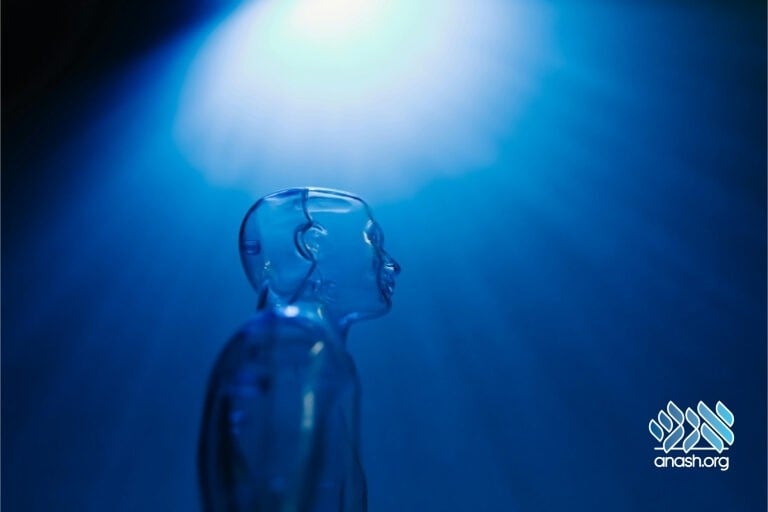The methods we have used to understand the context of what we learn and how we cross-reference sources, are at the brink of being shattered. Rabbi Rayi Stern and his team are at the forefront of this discovery voyage.
By Anash.org reporter
The world of AI is still in the infancy of its potential, especially in relation to successfully formulating Torah thoughts and plunging the depths of meforshim and Chassidus. As time passes and AI’s abilities and skills are finely tuned, it will be capable of adding an astounding level of understanding and perspective to our learning, and Rabbi Rayi Stern and his team at Aitorah.org are determined to be at the helm as this new resource explodes our perception of reality as we know it.
A prime example of the intense and tedious labor for sharp Torah scholars to undertake in the researching and compiling of Torah sources is the Sefer Ha’Erkim Chabad. To date, the research and compiling of Torah sources has been an intense and tedious labor for sharp Torah scholars to undertake. One of the greatest Chassidic encyclopedic projects of all time was taken on by R’ Yoel Kahn and Reb Sholom Charitonov at the Rebbe’s behest.
The Sefer Ha’Erkim Chabad is a reference book of every single concept and how it plays out in the multiple sources of Chassidus across the board: what Tanya, every maamar, and sicha teaches about the concept. The Rebbe strongly pushed for the work to be completed, and yet, with the tremendous time and effort it took to write eight complete seforim- even the letter Aleph has not been completed.
However, with the advancement and curation of AI, such a project should become a lot more doable in the near future, and with much more ease than ever before. The first projects that have been dabbled with in terms of Toras Hachassidus and AI was done by the Seforim.app team. The team has been passionately discussing and planning for over ten years about the immense potential AI has and how it could start to bring that to fruition.
“Torah is referred to as laws or halachos, which beyond being rules guiding conduct, can be viewed as the very legal decisions governing existence and reality — just like the ‘laws’ of physics are the ‘rules’ of how things inexorably are,” Rabbi Stern shared with Anash.org. “When Torah is saturated with more content, rich context, extensive permutations, and deeper layers of meaning- the world shifts.
“That’s what AI can give us- the culmination of generations of Torah study, the output of millions of brilliant minds, and layers of explanations across the board, instantly – and interactively – clarifying and accelerating the learner’s understanding and appreciation of the written word. It’s a whole new world, one that would take – and did take – hundreds of people thousands of years to accomplish!”
Although the exciting discussions have been going on for years, only recently was the team able to start getting some samples out to the public, due to the advancement of AI and the availability, ease of use, cheapness, and widestream accessibility it currently has.
“AI has two applications,” explains Stern, “it makes things easier and it does it better. When you can substitute a human with AI, it becomes immensely cheaper to accomplish the task. Humans have worked on innovations and compilations in Torah since the beginning. But with the advancement of technology, it will soon be able to put together the information much quicker and more efficiently than ever.”
The first project they completed this past winter was with the maamar of Basi Legani. Following the success of the mamer, when over 1,000 people accessed the interactive platform, the team moved on to their next project: AI-generated translations of Pirkei Avos in 12 different languages.
Within each language, users can choose a classic translation, a free translation, or other options. In order to keep improving, they encourage users to give feedback- including any suggested edits to the translations, input, or compliments on what they enjoyed of the text. The team is very particular about every step of the output.
“Our goal is to make sure that a responsible and safe approach is adhered to; that all necessary checks and balances are in place – on both a computer and a human level,” a member of the team shared. “With technology able to do so much, the challenge becomes how to use it best. The English translations were fully edited, and extensive work went into the process, in order to ensure consistency.”
‘The Pirkei Avos is a just small taste of the possibilities and plans in place, and is intended to bring up the larger discussion of where we are going with the new advances in technology – how we’re using it to make the world overflowing with Torah, “Kamayim layam mechasim.” Stay tuned for more initiatives coming very soon.
You can access the Pirkei Avos here: and visit the site at Seforim.app.
More information and roadmaps can be found at aitorah.org, and you can feel free to reach out to [email protected] with any inquiries.

“Horeven In Lernen” is key. Even with AI
There is a story of the Tz”Tz when He declined the offer that the Alter Rebbe wanted to bench him to know the whole Torah…. So there should be Yegiya in Torah…
20 years later He said I thought that if I knew the whole Torah there wouldn’t be Yegiya anymore. Now (Knowing the whole Torah,) I first see how much more there is to Horeveh.
How do they maintain accuracy